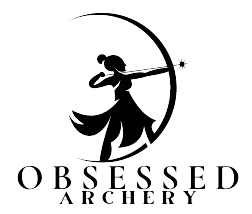Blog
bear hunting bow
-
sTable of Contents
The Bear Hunting Bow: A Powerful Tool for the Modern Hunter

When it comes to hunting large game like bears, having the right equipment is crucial. One tool that has been used for centuries and continues to be a popular choice among hunters is the bear hunting bow. In this article, we will explore the history of the bear hunting bow, its advantages and disadvantages, and how it has evolved to meet the needs of modern hunters.
The History of the Bear Hunting Bow
The use of bows for hunting can be traced back thousands of years. In fact, evidence of bow and arrow use dates back to the Paleolithic era. The bear hunting bow, specifically designed for taking down large game like bears, has been used by various cultures throughout history.
Native American tribes, such as the Apache and Lakota, relied on bows to hunt bears for food and other resources. These bows were typically made from materials like wood, sinew, and animal horn. The design of the bear hunting bow varied among tribes, but they all shared the common goal of delivering a powerful and accurate shot.
The Advantages of Using a Bear Hunting Bows
1. Stealth and Range: One of the main advantages of using a bear hunting bow is its ability to provide a stealthy approach and a long shooting range. Unlike firearms, bows produce minimal noise, allowing hunters to get closer to their prey without alerting them. Additionally, bows can shoot accurately at distances of up to 60 yards or more, giving hunters an advantage in open terrain.
2. Ethical Hunting: Using a bear hunting bow requires a high level of skill and precision. This makes it a preferred choice for hunters who prioritize ethical hunting practices. A well-placed shot from a bow can quickly and humanely take down a bear, minimizing suffering and ensuring a clean kill.
3. Connection to Tradition: For many hunters, using a bear hunting bow is a way to connect with the traditions and skills of their ancestors. The act of drawing back the bowstring, aiming, and releasing the arrow requires focus, discipline, and patience. It is a deeply personal and rewarding experience that connects hunters to the natural world and their heritage.
The Disadvantages of Using a Bear Hunting Bows
1. Skill and Practice: Mastering the use of a bear hunting bow requires significant time and practice. Unlike firearms, which can be relatively easy to use, bows require hunters to develop proper form, strength, and accuracy. This learning curve can be a deterrent for some hunters who prefer a quicker learning curve.
2. Limited Range and Power: While bows offer a long shooting range compared to other traditional hunting methods, they still have limitations. The effective range of a bear hunting bows is typically around 60 yards, which may not be sufficient in certain hunting scenarios. Additionally, bows have less stopping power compared to firearms, which can be a concern when dealing with large and potentially dangerous game like bears.
The Evolution of the Bear Hunting Bow
Over the years, advancements in technology and materials have led to the development of more efficient and powerful bear hunting bows. Modern bows are often made from lightweight and durable materials like carbon fiber and aluminum, making them easier to carry and handle in the field.
Compound bows, in particular, have revolutionized bear hunting. These bows utilize a system of pulleys and cables that store and release energy, resulting in increased arrow speed and accuracy. Compound bows also have adjustable draw weights and lengths, allowing hunters to customize their equipment to their specific needs and preferences.
Conclusion
The bear hunting bow is a powerful tool that has stood the test of time. Its stealth, range, and connection to tradition make it a popular choice among hunters. While it requires skill and practice to master, the rewards of using a bear-hunting bows are well worth the effort. With advancements in technology, modern bows have become even more efficient and effective, ensuring that hunters have the tools they need to pursue their passion ethically and responsibly.

